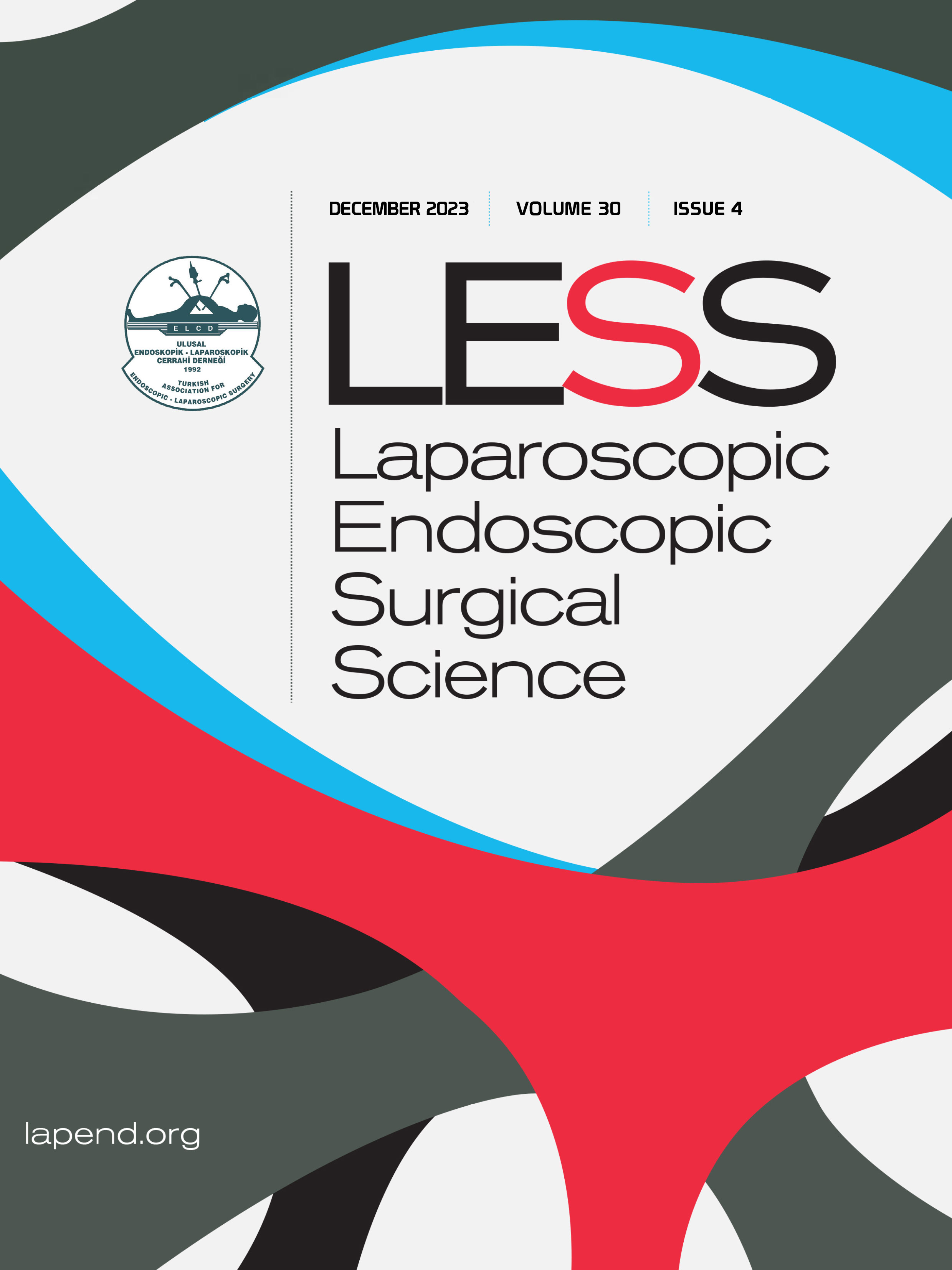Role of Endoscopy in the Treatment of Morbit Obesity
Asım Cingi1, Atilla Koral2, Yunus Yavuz31Marmara Üniversitesi Tıp Fakültesi, Genel Cerrahi Anabilim Dalı, İstanbul2Çukurova Doktor Aşkım Tüfekçi Devlet Hastanesi, Genel Cerrahi Kliniği, Adana
3Bilim Üniversitesi Tıp Fakültesi Genel Cerrahi Anabilim Dalı, İstanbul
INTRODUCTION: Preoperative assessment of bariatric surgery candidates, intra operative evaluation to decrease complications, treatment of post surgical problems and endoscopic methods for the treatment of obesity constitude major areas of interest in the use of endoscopy for bariatric treatments. In this article role of endoscopy for obesity treatment has been evaluated mainly as a preventive tool of the complications of bariatric surgery and use for application of adjustable intragastric prosthesis.
METHODS: Role of endoscopy in the treatment of morbid obesity has been discussed in this article via evaluation of two studies in this subject. Main article discussed was intraoperative endoscopic assessment of the pouch and the anastomosis during laparoscopic Roux-en-y gastric bypass in which thirteen consecutive patients evaluated between May 2008 and May 2009. The second study was evaluation of the intragastric prosthesis as a weight reduction procedure in which again fourteen consecutive patients were included.
RESULTS: 1. It has been stated that endoscopic examination during the LRYGB operation revealed bleeding at the transection line or anastomosis site in none of the cases. In two patients air-leak test was positive and the anastomosis was reinforced with additional sutures. All the patients, including those with positive air-leak test, were discharged from the hospital with no leak complications. After a mean follow-up of 9.1 ± 5.5 months, except for the patient who underwent balloon dilatation, no other patient had anastomotic stricture. 2. In the study evaluating the intragastric prosthesis applied endoscopically mean follow-up period was declared as 10.7 months. At the end of this period excess weight loss was determined to be 30.3%
DISCUSSION AND CONCLUSION: Intraoperative endoscopy is valuable in the assessment of bleeding, anastomotic patency and air leak during LRYGB and it might be a helpful auxiliary tool to decrease morbidity during the learning curve period. Regarding intragastric prosthesis, although there were significant differences between patients, Endogast has been regarded as an effective technic adjunctive to bariatric surgical procedures.
Morbid Obezite Tedavisinde Endoskopik Uygulamalar
Asım Cingi1, Atilla Koral2, Yunus Yavuz31Marmara Üniversitesi Tıp Fakültesi, Genel Cerrahi Anabilim Dalı, İstanbul2Çukurova Doktor Aşkım Tüfekçi Devlet Hastanesi, Genel Cerrahi Kliniği, Adana
3Bilim Üniversitesi Tıp Fakültesi Genel Cerrahi Anabilim Dalı, İstanbul
GİRİŞ ve AMAÇ: Bariatrik cerrahi adayı olan hastaların cerrahi öncesi değerlendirilmesi, cerrahi sırasında komplikasyonları azaltmak için kullanımı, cerrahi sonrası gelişen problemlerin tedavisi ve obezitenin tedavisi için geliştirilen endoskopik yöntemler, endoskopinin obezite
tedavisinde temel kullanım alanlarıdır. Bu yazıda endoskopinin obezite tedavisindeki yeri özellikle obezite cerrahisi sırasında komplikasyonları önleme amaçlı kullanımı ve intra gastrik ayarlanabilir protez yerlefltirilmesi sırasında kullanımı açısından incelenmiştir.
YÖNTEM ve GEREÇLER: Bu incelemede Mayıs 2008 ve Mayıs 2009 tarihleri arasında ardışık on üç hastanın değerlendirildiği laparoskopik Roux-en-y gastrik bypass cerrahisi sırasında pofl ve anastomozun intraoperatif endoskopik değerlendirilmesi konulu yazı ve yine ondört ardışık hastanın irdelendiği obezite tedavisinde farklo bir yöntem olarak intragastrik protez kullanımı konulu çalışmalar temel alınarak endoskopinin morbid obezite tedavisindeki rolü tartışılmıştır.
BULGULAR: 1. LRYGB sırasında uygulanan endoskopik inceleme sırasında hiçbir hastada transeksiyon hattında ya da anastomoz alanında kanama tespit edilmemiştir. Endoskopik inceleme sırasında iki hastada dikiş hattından hava kaçağı tespit edilmiş ve anastomoz hattı ek dikişler ile takviye edilmiştir. Çalışmaya alınan tüm hastalar hava-kaçak testi pozitif olanlar da dahil, hastaneden kaçak komplikasyonu olmadan taburcu edilmişlerdir. Ortalama 9.1 ± 5.5 aylık takip sonrası balon dilatasyonu gereken hasta dışında anastomoz darlığı meydana gelmemiştir. 2. Endoskopik olarak yerleştirilen intragastrik protezin incelendiği çalışmada hastaların ortalama takip süresi 10.7 ay olarak belirtilmiştir. Bu dönem sonunda fazla kiloların kaybı ortalama %30.3 olarak hesaplanmıştır.
TARTIŞMA ve SONUÇ: LRYGB sırasında intraoperatif endoskopi kullanımının intralüminal kanama, anastomoz darlığı ve anastomoz kaçağı gibi önemli problemlerin operasyon sırasında tanınması ve tedavi edilmesine olanak sağlaması ile özellikle öğrenim eğrisi döneminde morbiditeyi azaltmada faydalı olabileceği değerlendirmesi yapılmıştır. İntragastrik protez ile ilgili çalışmada hastalar arasında belirgin farklar olsa da bu yöntemin bariatrik cerrahi prosedürlere yardımcı etkin bir yöntem olarak düşünülebileceği sonucuna varılmıştır.
Corresponding Author: Asım Cingi, Türkiye
Manuscript Language: Turkish












